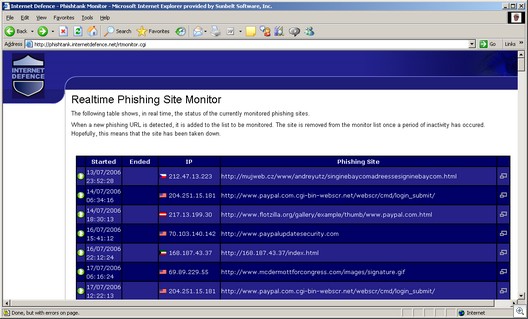Well, I’d been running Vista Beta 2 on one of my two primary desktop computers ever since it was released, almost two months ago. I’ve been generally thrilled with its features, performance and reliability. But the life of a beta tester is one always fraught with new dangers. Just about the time you get everything exactly the way you want it, it’s time to install a new version and risk messing it all up.
Vista Build 5472 isn’t available to the general public, and it’s probably a good thing. As Microsoft warns, although it’s designed to fix some of the bugs in Beta 2 and speed up performance, it hasn’t undergone nearly as extensive testing as did the public beta. I put off installing it for a while after it was made available to me, simply because I was so pleased with the Beta 2 installation I had and hated to mess with success. But last week, I decided to bite the bullet and go ahead with it. Who knew? Maybe I’d be pleasantly surprised.
The build number probably should have been my first clue. As a long-time Star Trek fan, I should have noticed that except for the first digit, it was identical to the designation for Species 8472 – an evil alien race so powerful that they were able to leave Borg cubes in shreds.
A build with a number so similar was destined to do damage to my perfect little Vista world. Ah, hindsight.
I thought seriously about installing the new build to a new partition, but I was already dual booting Vista and XP on the machine, so I ended up throwing caution to the wind and going for the upgrade. The upgrade process itself went relatively smoothly, although it took a long time. The first time it booted into Vista, though, the desktop was empty. And I mean completely empty – my custom wallpaper was still there but that’s it. No taskbar, no sidebar, no icons. The cursor moved freely, but right clicking the desktop failed to bring up a context menu. That was one of those “Oh, no, what have I done?” moments.
Luckily, another reboot restored my missing desktop items and functionality. However, one thing that I noticed right off was that not all of my settings had been retained – despite the fact that the upgrade instructions implied that they would be saved. Probably the most annoying was the multi-monitor setting, which had reverted back to mirroring (where both monitors show the same thing, instead of extending the desktop across the monitors). In fact, I soon discovered that the option to extend the desktop wasn’t even present in the display properties – because the upgrade had rolled back my video card drivers to a generic driver. After reinstalling the proper ATI Radeon drivers, I had extended desktop functionality back.
Temporary inconveniences like that are to be expected, and if that had been the extent of the problem, I wouldn’t complain. Unfortunately, after using the new build for almost a week, I’m very disappointed in overall system stability. I never had a program crash in Beta 2 (although there were a couple of small third party utilities that wouldn’t install). With Species 5472, crashes occur several times per day. Most disheartening, the main victim of this new-found OS instability is Office 2007, which ran without a flaw on Beta 2. And most maddening of all, it’s Outlook – my most-used and relied-up program – that was hit the hardest. I found myself getting a message that “Outlook has stopped working” every few hours. The program would close and then try to restart, going through the long process of checking the profile folder for corruption because it had been closed improperly. Canceling the checking process just closed the program again.
I decided maybe the profile itself had been corrupted, and made a new one. Of course, this resulted in Outlook losing my autocomplete entries, and within minutes it was crashing again with the new profile. At that point, I tried turning off Exchange caching. That seemed to do the trick; I’m no longer getting Outlook shutdowns all the time. But I’m also not able to reap the benefits of cached Exchange mode. Exchange caching caused no problems when Outlook 2007 was running on the old Beta 2.
After several days and a lot of tweaking, I have a useable Vista system again. There are still some remaining stability issues, and I’m not noticing any performance improvements (although, to be fair, there’s no performance degradation either). I feel as if I wasted several days, but hey, at least I got a column out of it. And I can tell any of you MSDN members, official beta testers or others who have access to 5472 and haven’t tried it yet to think twice before upgrading Beta 2. If I had it to do over, I’d install it in a different partition and leave my previous Vista installation intact.
Meanwhile, I’ve heard from a number of public beta testers who are unhappy that the interim builds aren’t available to them.
Tell us what you think. Once Microsoft has released a beta OS to the public, should they make all the interim upgrades available too? Or does it make more sense to only release the most thoroughly tested versions to the general public?
If you’ve upgraded to 5472, was your experience similar to mine? Better? Worse? Next time a new build comes out, will you do an upgrade or protect your current installation and do a separate new install?
Let us know your experiences and opinions.
Deb Shinder




